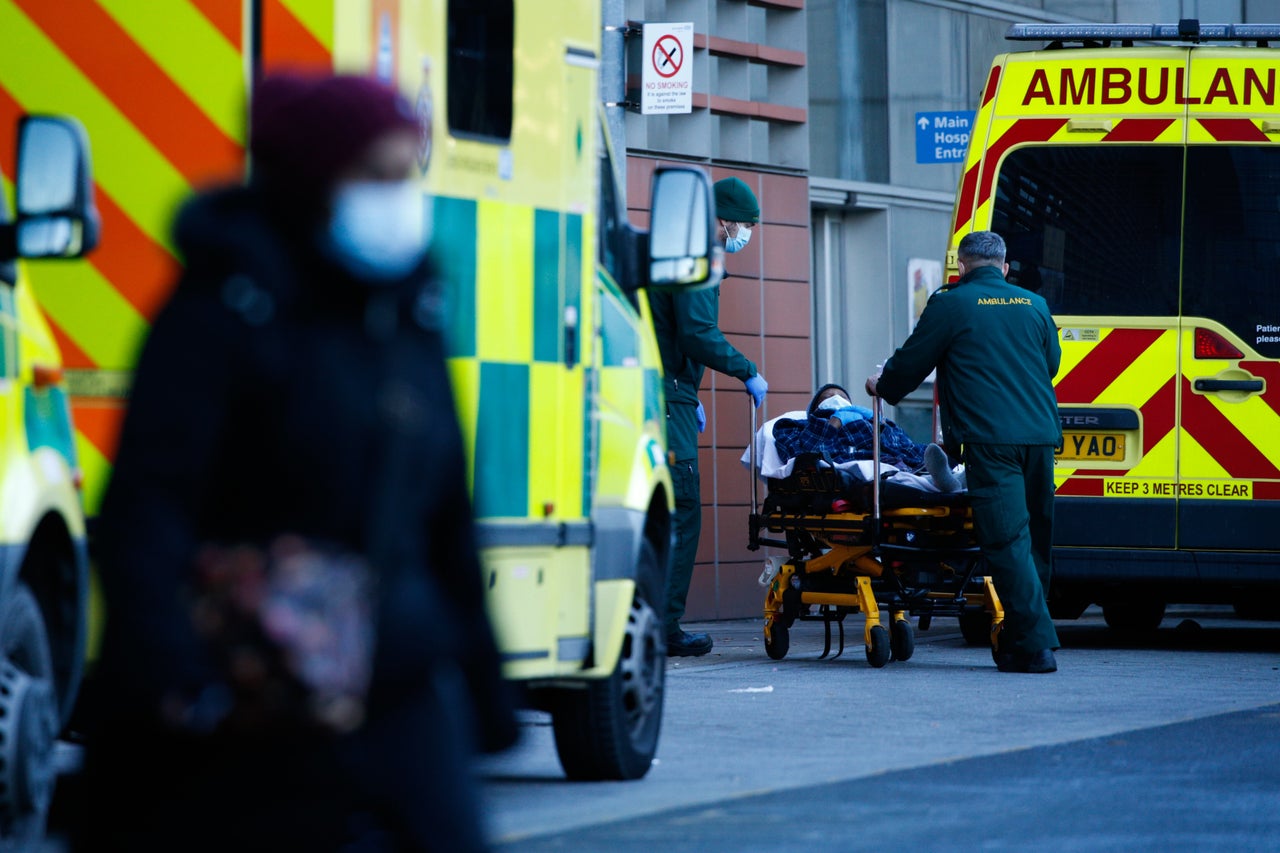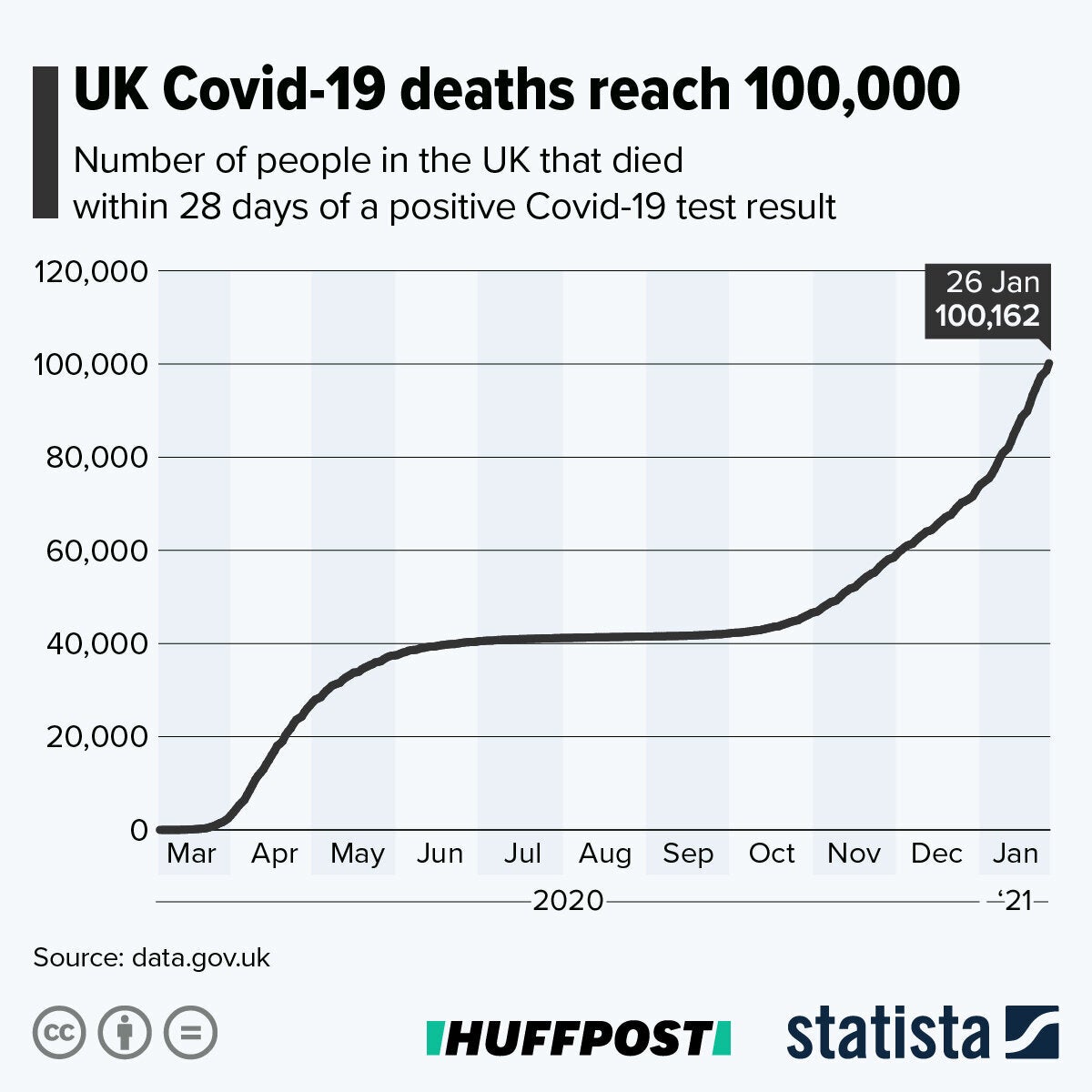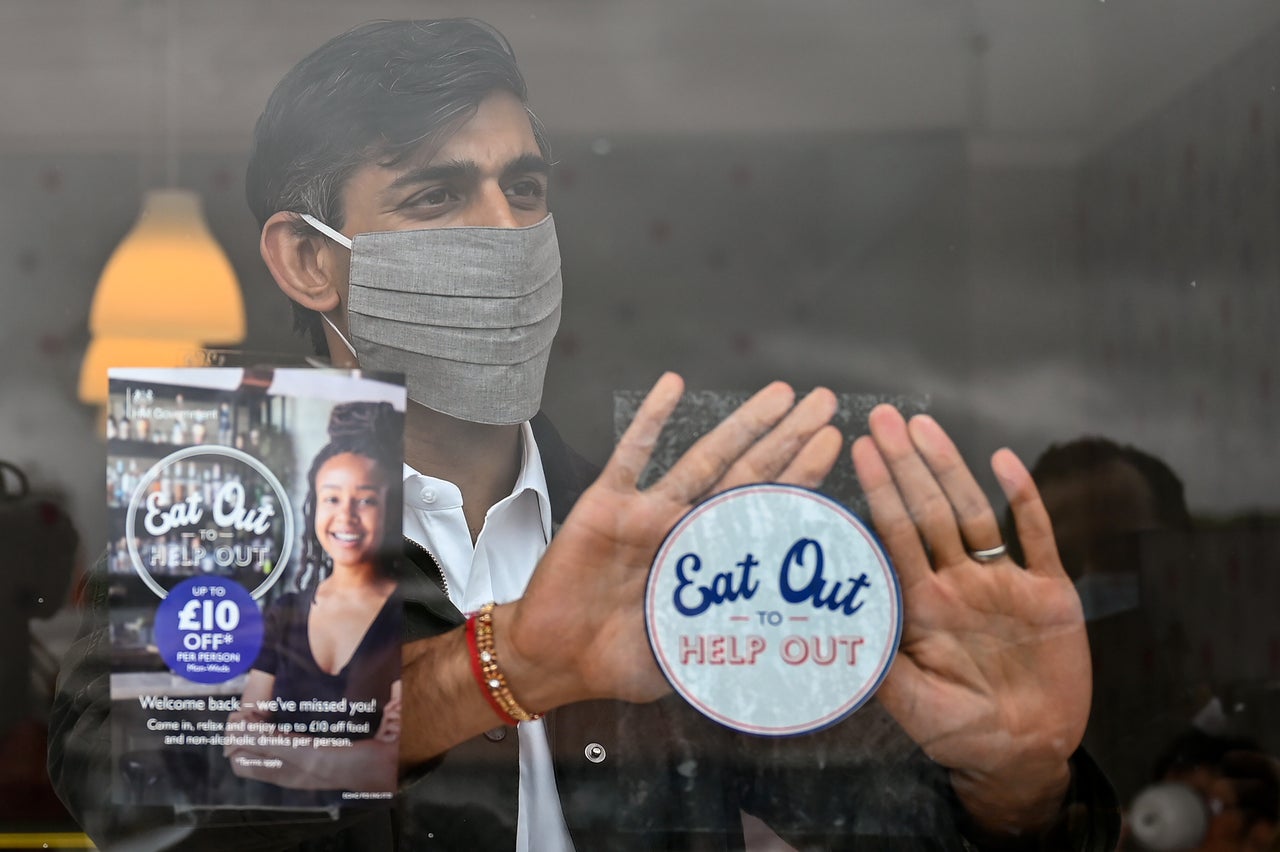The UK on Tuesday recorded its 100,000th death linked to Covid-19 – a horrific statistic that is five times the death rate once described within government as a “good” projected outcome.
According to data compiled by Johns Hopkins University, this puts the country at the fifth-highest – and the highest in Europe.
Meanwhile, January has emerged as the pandemic’s deadliest month, with 1,202 people dying on January 18 – the highest ever in a single day.
So, how bad are things right now?
“We’re in a crisis we’ve never seen before,” Dr Deepti Gurdasani, a clinical epidemiologist at Queen Mary University in London, told HuffPost UK. “It’s clear that the NHS has been overwhelmed and levels of hospitalisation are higher than even in the first wave, and we’re having an unprecedented number of deaths reported.”

Compared to almost every other country in the world, the UK has one of the very highest daily death rates by population, according to data from Oxford University’s research platform Our World In Data. “It’s a really concerning state of affairs and it’s difficult to see an end in sight,” Dr Gurdasani concluded.
In addition to the nearly 100,000 fatalities, the pandemic will also leave huge numbers of people suffering from the serious and often debilitating symptoms of long Covid for months, if not years, to come.

How much of this is down to the new variant?
Dr Andrew Lee, a public health and disease control specialist at the University of Sheffield, pointed to a paper published last week that suggests the UK variant spreads “a bit faster” but not as much as initially expected. “We can say that some of the increase [in Covid-19 cases in the UK] is down to the B.1.1.7. variant, but that doesn’t explain all of it,” he told HuffPost UK.
“There’s a danger in blaming these new variants and in people thinking that the rise in cases and deaths is being driven by them – but that’s not the case.
“Yes, they do contribute to the overall pandemic. But even if you took out the new variants, we would still have had a lot of cases of infection as we are seeing currently.”
“Rather than adapt to the dangers as other countries have done, the UK delayed its response – and that has cost thousands of lives.”
“The new variant has certainly contributed to the last surge that we’ve seen,” Dr Gurdasani agreed. “But we have to look at why these variants have emerged in the UK and certain parts of the world, and not in other parts of the world.
“It’s clear that the virus mutates as it replicates so when you have high levels of transmission, you create conditions for mutations. So while high transmissibility of new variants has contributed to the spread, the variant has likely arisen because of our failures in controlling transmission.”
Currently, the new Covid-19 variants on people’s minds are from the UK, South Africa and Brazil. “The virus mutates as it replicates so high levels of transmission create conditions for mutations,” said Dr Gurdasani, “and what we’re seeing is that the different variants are arising in parts of the globe that have had high levels of transmission.”
The problem isn’t so much the variant but the public health response to it. “Rather than adapt to the dangers as other countries have done, the UK delayed its response – and that has cost thousands of lives.
“Countries that controlled transmission early on, such as New Zealand and Australia, don’t have to contend with new variants,” she said. “They’ve been living normal lives and have had a fraction of the level of deaths that we’ve had.”
How much of this is down to the government?
As Gurdasani pointed out, the UK variant has been around for months now; it was first detected back in September. “There are a lot of measures that could have been taken in a timely fashion once we knew about the variant. The NHS being overwhelmed was not just predictable – it was literally predicted.
“The worst part of [the death rates] is that despite having really good scientific expertise within the country and despite the government repeatedly being told by scientists what needed to be done, the evidence never made its way into policy.”

“It’s not a failure of the public,” she continued. “There’s only so much the public can do. People have been following the rules, but the rules are flawed: people were encouraged to Eat Out to Help Out, meet over Christmas; schools were not taught that children should be wearing masks in classrooms.
“As individuals, people can’t do much when the policy is flawed.”
It may be easy and simple to blame the UK’s bleak picture on government’s reaction to the pandemic – but in reality, Dr Lee said, the problems stretch back years.
“We have to be nuanced in our discourse, instead of this black-and-white approach,” he said. “We were in a perfect storm.
“Firstly, we already anticipated a surge in cases during the winter months. Then, some of these powerful driving forces have been taking place for years. If you look at poverty and inequality in the north, for example, people are forced to live in cramped housing conditions in insecure jobs, which forces them to go out to work – and disincentivises them to go into self-isolation.
“For the last decade, there’s also been a weakening of public health infrastructure looking at pandemic preparedness. We’ve been focused on the flu, and from an academic point of view we had a very weak evidence base for how to respond to pandemics.
“And then if you look at our health services, which were already stretched to the max one, two, three years ago – when you add all of these factors together, it’s a potent cocktail. So throwing in a pandemic virus lit the flames.”
Travel restrictions
Since January 18, anyone who wants to enter the UK has been required to provide a negative coronavirus test.
It is the first time a negative test has been required to enter the UK since the first coronavirus case was detected in the country on January 31, 2020.
As Professor John Edmunds, a member of the government’s Scientific Advisory Group for Emergencies (Sage), said, ministers had taken a “rather lax” approach to travel. A long list of countries, including Japan, Thailand, Iraq, Belgium, South Africa, Dubai and China, have required pre-departure testing as a requirement of entry for various groups of people for a long time.
“As individuals, people can’t do much when the policy is flawed.”
The government is expected to announce imminently that international travellers arriving in England will have to quarantine in a hotel – a policy that a scientific adviser called for as far back as last June and which has been in practice in countries including China, New Zealand, Australia, Hong Kong, India, Indonesia, Singapore and Taiwan.
New Zealand, which confirmed its first case of Covid on February 28, closed its borders to all non-residents on March 19, while residents returning home were required to self-isolate. On April 10, the rules were tightened with the isolation having to take place in government-run hotels.
In Australia, which confirmed its first case on January 25 and closed its borders to non-residents on March 20, people returning home had to quarantine for two weeks in government-run hotels from March 27.
When news broke of a strain of coronavirus linked to South Africa that had been detected before Christmas, the government did not choose to shut its travel corridors until almost four weeks later. A leading infectious diseases specialist from South Africa has said vaccine efficacy could be “slightly diminished” in the face of the country’s variant, although on Monday the vaccine manufacturer Moderna said its jab would be effective against the variant.
Christmas household mixing
Less than a week before Christmas Day, the government announced a dramatic change in restrictions: rather than having a five-day window in which multiple households would be allowed to mix, Christmas bubbles would now only be allowed for one single day in regions placed under tier 1, 2 and 3 restrictions.
It now looks as though even that one day was too much. Covid-19 cases soared in all but the regions that were in tier 4 restrictions at the time, where Christmas bubbles were not permitted.
“Scientists were united on this; the government was repeatedly told not to allow mixing over Christmas,” Dr Gurdasani said.
“We were already in a very precarious position even before then, so we were not in a position where we could manage more cases. But once again, the government did not follow the evidence.”
Schools open
In December, scientists urged the government to go into a national lockdown with school closures. But Boris Johnson chose to ignore warnings by his own advisers, choosing instead to threaten legal action if schools decided to shut early ahead of Christmas.
For months, the government claimed schools did not contribute to transmission – despite a report by Sage that showed children played a “significantly higher role” in bringing infection into households and were much more likely to transmit to others within the household.
Even now with schools officially open only for vulnerable children and children of key workers, teachers have reported almost full classrooms and significantly higher attendance rates compared to the first lockdown. Dr Gurdasani said the reports were “astonishing”. “They’re open but without any mitigation measures in place,” she said.
“Studies across the globe show that mitigating measures in school and schools moving to remote learning have a huge impact on reducing transmission, so that’s another huge area of failure by the government.”
A lockdown for the middle classes
Although the public has been urged to “stay at home and reduce all social contact that is not absolutely necessary”, people working in non-essential construction and manufacturing are still being encouraged to continue as usual. One construction office worker told HuffPost UK: “It doesn’t feel like the first lockdown.”
“Certainly it looks like there has been more activity,” Dr Gurdasani said. “If you delve into the evidence, most people are complying – or want to comply.”

The problem – despite the government’s public shaming of “egregious” illegal house parties that are “costing lives” – isn’t the public’s adherence to the rules, but the government’s complete absence of support to encourage people to quarantine at home.
The government’s £500 one-off payment for poorer workers – introduced in September for those told to isolate by human contact tracers, and in December for those told to isolate by the NHS Covid app – is out of the reach of many employees.
On Monday, the head of Test and Trace, Baroness Dido Harding, said people with Covid-19 are too “scared” to come forward for a test because of a lack of government cash support. Downing Street has ruled out proposals from the Department of Health and Social Care to pay everyone a flat-rate of £500 each if they were forced to self-isolate.
“Many people are not isolating when they develop symptoms or when they’ve had contact with someone who has developed symptoms, and this appears to be related to the lack of financial and practical support here,” Dr Gurdasani continued.
The UK has one of the lowest statutory sick payments in Europe and the lowest self-isolation pay compared to all the OECD (Organisation for Economic Co-operation and Development) countries. As a result, people who are sick cannot afford to not go into work.
Test, trace and isolate
“We know that a good test, trace and isolate system is the cornerstone of a good public health response,” Dr Gurdasani said. “If you look at countries ho have been successful in controlling the virus, those are the countries who had a very good system in place.”
And yet the government’s Test and Trace service has been consistently poor, with low contact-tracing rates and continued failure to meet Boris Johnson’s target of giving 100% of test results within 24 hours.
“The key aspects of a good system are rapid testing – a good turnaround of tests within 24 hours – rapid contact tracing in order to trace contacts before they become infectious, and to trace the majority of contacts, ideally over 80%. And all three aspects have been failed by the test, trace and isolate system.”
As a result, even the government’s own scientific advisers have admitted that the UK’s Test and Trace programme is only having “a marginal impact” in reducing Covid-19 transmission.
In countries such as South Korea, backwards contract tracing has enabled services to find where a coronavirus patient contracted the virus in the first place. Whereas in the UK, forward contract tracing means finding all the people they could have passed the virus on to, and asking them to self-isolate.
Although forward contact tracing is immediate and “high yield”, backwards contract tracing allows scientists to identify coronavirus clusters and stop them from spreading further. It’s something that the government’s Sage group called for back in the summer of 2020.
“Instead of just identifying people who are at risk because somebody has become infected, [countries that use backward contact tracing] try and figure out how that person got infected,” Dr Gurdasani said. “That way they are able to identify many more clusters of infections.
“Whereas in the UK, we don’t really detect a lot of networks of transmission because our contact tracing is not carried out in so much depth to carry out that sort of epidemiological analysis.”